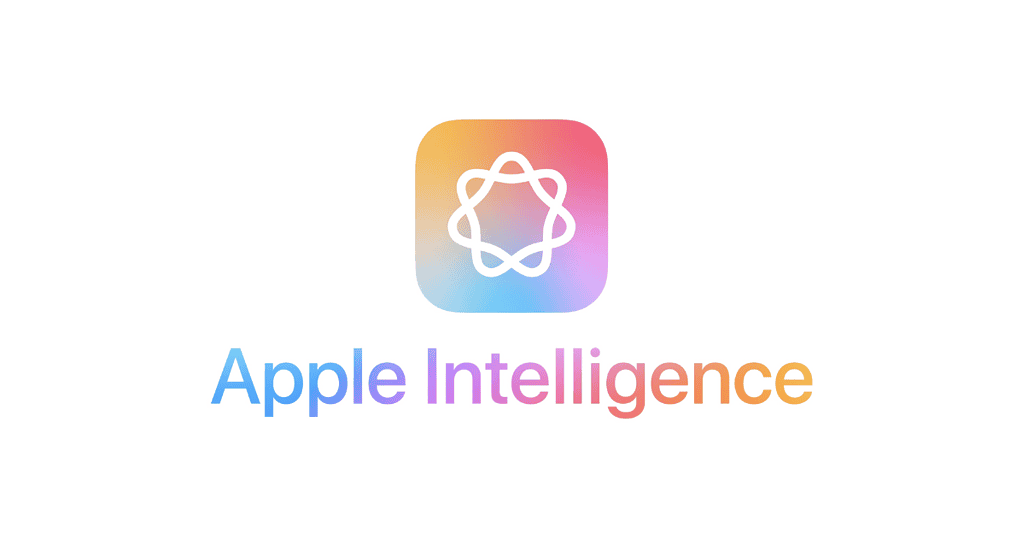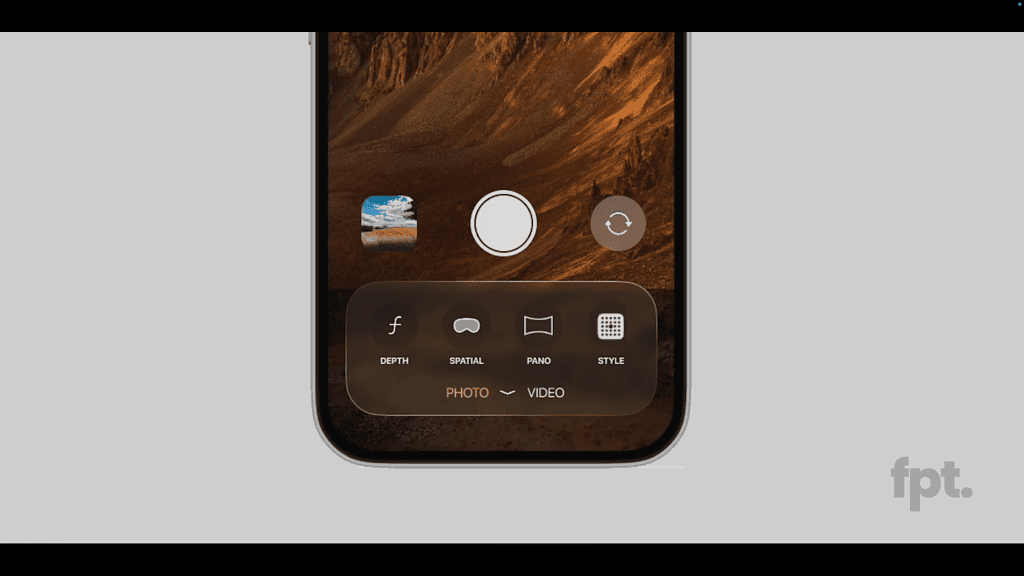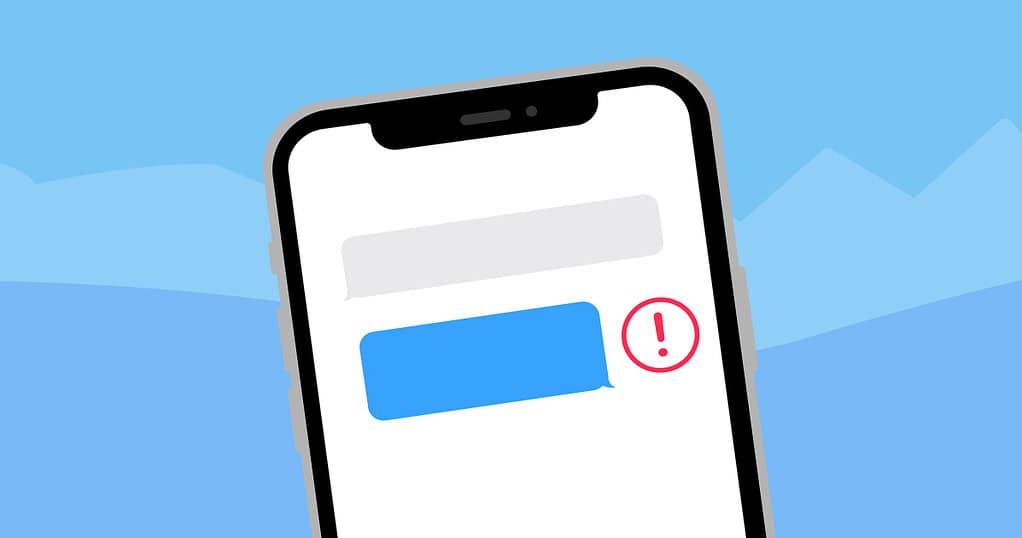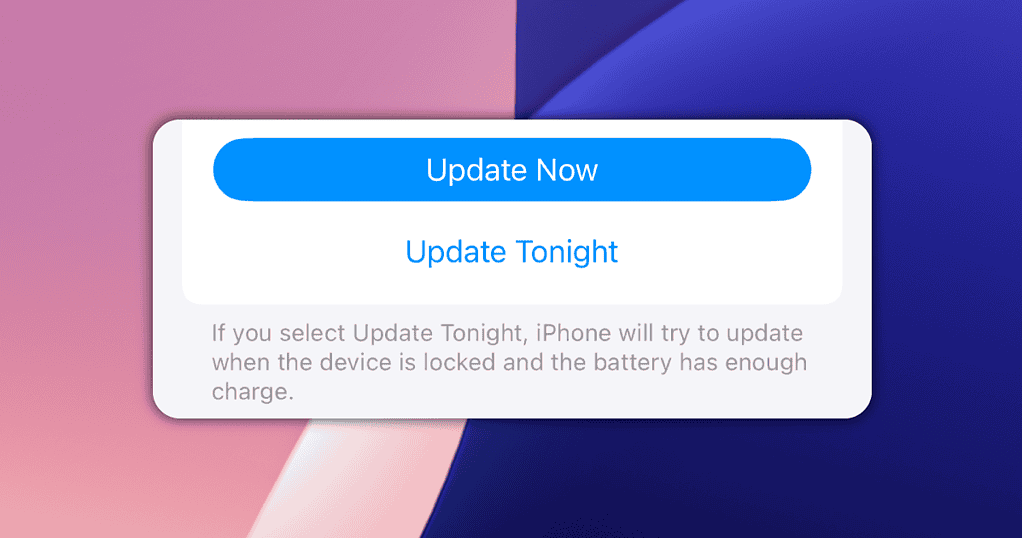In the tech industry, leaks appear every other day — sometimes, several in a single day. With so many brands (and so many people) involved in each product’s development and manufacturing, some loose ends are inevitable. This is also the case for Apple’s next iPhone software update. Check below what we already know, thanks to rumors and leaks, about iOS 19.
What Features Is iOS 19 Expected To Have?
There are two types of features we can expect in iOS 19: enhancements of existing ones and new functionality. It’s not set in stone which aspects we’ll see with each kind of update, but here’s what is already known — and speculated.
Apple Intelligence Improvements

Apple Intelligence’s rollout has been, to say the least, less than stellar. Notification summary, for instance, one of its main utilities, is being heavily criticized for its inaccuracy. There are also functionalities announced but delayed, old features removed, and stability issues all over the place. Unsurprisingly, users aren’t giving a single damn about the toolset.
iOS 19 will arrive with a big responsibility: to make customers want to use AI features. At least, there’s one thing we can guarantee: more languages will arrive soon. Apple promised support for Chinese, French, German, Italian, Japanese, Korean, Portuguese, Spanish, and Vietnamese in 2025. Indian and Singaporean English localizations are expected as well.
The geographic restrictions should be lifted in China and the EU this year, too. However, this change isn’t necessarily related to iOS 19, though Apple may choose to promote it as such.
In China, the government requires AI models to be pre-approved before they’re made available to the public. All of those, right now, are made by local companies. Apple will partner with Alibaba to power its AI toolbox. Previously, it held talks with Tencent, ByteDance, and Baidu.
AI-Powered Battery Management
Multiple reports, including from MacRumors, confirm that iOS 19 will introduce AI-powered battery optimization. This feature will use Apple Intelligence to analyze your charging habits, app usage, and daily patterns to intelligently extend battery life and reduce wear. Instead of static battery settings, iOS 19 will dynamically adjust background activity and charging behavior based on your routine. This is expected to improve long-term battery health, especially for users who keep their devices plugged in overnight.
Overhauled Siri
Siri has been through some important changes last year, including ChatGPT integration. In 2025, the trend continues: Siri should get its own LLM, acting as an AI tool without the ChatGPT backbone.
The virtual assistant will be able to recognize context in prompts and offer situational-aware responses, for instance. According to rumors, the changes were expected to start arriving in iOS 18.4, with iOS 19 cementing Siri’s new positioning.
However, the Siri updates got delayed. Originally expected on iOS 18.4, Siri 2.0 wasn’t ready on time, which led to speculation about its fate. Some considered the updated assistant would be postponed to iOS 18.5. However, Apple doesn’t release key features so close to a new OS launch. iOS 19 will likely be announced in June.
Apple Basically Confirmed New Siri Won’t Come Before iOS 19

After months of rumors, the company finally acknowledged the matter. In a statement to blogger John Gruber, from Daring Fireball, Apple admitted the new Siri is being delayed indefinitely. “It’s going to take us longer than we thought to deliver on these features”, said a company representative. “We anticipate rolling them out in the coming year,” she added.
Gruber, who has been covering Apple topics for over 20 years, believes “the coming year” may have an unusual meaning. He thinks the company may be considering “product years” instead of “before 2025 ends” or “within the next 12 months”. That would mean “in the next release cycle”, then, sometime between WWDC 2025 and WWDC 2026. The former is when iOS/iPadOS 19, macOS 16, and visionOS 3 will be announced.
Bloomberg‘s Mark Gurman confirmed this move with “people involved in the efforts”. His sources explained that Apple engineers tried to fix bugs and make Siri 2.0 work satisfactorily, but weren’t able to. The goal was, at most, a May launch, with iOS 18.5. The project’s current state, however, is still too unusable to make it in time. According to Gurman, some people are considering starting from scratch, setting a launch deadline only for 2026.
Siri Delay on iOS 19 May Be Related to Security
Another possible issue, speculated by developer Simon Willison, is that Siri would be too vulnerable to prompt injection. Any AI tool is programmed to refuse prompts related to some topics. If you, e.g., ask ChatGPT to teach you how to make a homemade bomb, it will refrain from doing so. Prompt injection is a technique that tricks AIs into giving this information, bypassing the safeguards created by its developers.
A TechCrunch report from last year shows precisely that, with the very example I used above. A hacker was able to “jailbreak” ChatGPT, making it teach how to create a bomb from fertilizers. The outlet took the report to an explosives expert, who confirmed that the device ChatGPT engineered would work as a bomb.
No AI is immune to prompt injection, so this isn’t an Apple-only issue. Also, current tools have evolved considerably in that area, and that probably includes Apple Intelligence and the new Siri, too. However, many of the promised Siri features involve sensitive data. On-screen awareness, e.g., means the assistant will be able to see everything that happens on your Apple device. Even if most of Apple Intelligence’s tasks are performed locally, a cyberattack based on prompt injection could have disastrous results.
Siri Delays Impacts Apple’s Product Roadmap
The Siri Situation became so serious that it has even impacted Apple’s product release calendar for 2025. Also, according to Gurman, Apple’s new HomePod with a proper display has been shelved at the last minute. The “smart hub” project, rumored since 2023 at least, was on track for a March announcement. However, the device relies heavily on Siri for its operation. With the assistant’s new version seeing numerous delays, it wouldn’t be feasible to launch the new product.
Siri 2.0 Foundation in iOS 19 Beta
While the full Siri 2.0 overhaul is delayed until 2026, early groundwork will reportedly appear in iOS 19 betas. These under-the-hood improvements will prepare the system for more contextual and intelligent responses in the future. While users won’t see dramatic changes in day-to-day Siri use immediately, these updates are necessary steps toward rolling out Apple’s new LLM-powered assistant across devices.
Redesigned Camera App (and Maybe More)

According to a leak received by Jon Prosser of FrontPageTech, iOS 19 may bring a redesign to the Camera app. For starters, the different photo and video modes are condensed under a pop-up menu instead of a text carousel. There are also new animations for the UI elements and quite extensive use of transparency and blur effects.
That last part may point out something bigger. Prosser speculates that a major design change may be coming to iOS in the near future. New looks are quite overdue, if you consider the last time it happened was when iOS 7 ditched skeuomorphism. That happened in 2013, over a decade ago.
Staged Rollout: Full iOS Redesign May Only Come in 2026
And how would iOS 19 look, according to those rumors? FrontPageTech‘s host is a lot like visionOS. This makes sense, considering movements like redesigning the Settings app in macOS Ventura (and tweaking it in Sequoia) to resemble iPadOS. If Apple aims for a consistent look across all its devices and operating systems, this is a way of doing that.
One point, Prosser adds, is that there is a good chance the UI overhaul won’t come all at once. He considers (and I agree) that Apple could modernize system apps and change smaller UI elements, only introducing a major redesign later.
That’s something Apple has done before, e.g., with macOS design changes: the Aqua interface became increasingly flatter over the years. Glossy elements were gradually replaced, and then, in 2014, OS X Yosemite introduced completely flat looks.
The staged redesign hypothesis also makes up for a good timeline for iOS 20, with 2026 being the actual overhaul. Unlike iPhones, which got irregular numbering, iOS kept consistent versioning since launching, which means 2026 marks 20 years of iPhones. Do you know what else is likely to arrive in 2026? The foldable iPhone.
Another hint to a major redesign, making iOS more akin to visionOS, is the recently-released Invites app. While other Apple-made iOS apps use the card-based interface, none do that as extensively as Invites. The heavy usage of transparency and blur is also there, hinting that the company may have bigger interface changes incoming.
iOS 19 Redesign Rumored Once More
In a March 10 publication, Mark Gurman (yeah, him again) corroborated some of Prosser’s allegations. The Bloomberg analyst called the redesign a “dramatic overhaul”, expected to appear in iOS, iPadOS, and macOS soon. iOS 19 is expected to have one of the most substantial design changes since iOS 7, incorporating more transparent interfaces and adopting design principles from visionOS.
Gurman also believes the new looks will draw heavy inspiration from visionOS. He disagrees with Prosser’s predictions, however, on the release date: Mark believes Apple will introduce the redesign this year.
Mid-March 2025 Rumor Round-Up
In his March 16 newsletter, Mark Gurman claimed the iOS 19 redesign will go deeper than just the visual part. Gurman states that the new interface will “alter the way people interact with their devices for many years to come”.
One objective is, according to him, “set the stage for new hardware designs, including foldable devices and touch-screen Macs”. In this case, it makes sense to use visionOS as the conceptual and design basis for the new platforms. It is the newest OS made by Apple, but that’s only part of the story.
The Vision Pro OS is also the first to adopt a new form-factor since watchOS was released, in 2015. We can go further and group all touchscreen-based devices — iPhones, iPads, Touch and Nano iPods, and Apple Watch — together. In this case, we could consider visionOS the first interface change in any Apple Product since 2007.
That year, the company released both the Apple TV and the original iPhone. The former had an interface based on Mac OS X’s Front Row, so it wasn’t completely new. And, in terms of changing whole industries, nothing — including the Vision Pro itself — has been as impactful as the iPhone.
According to Gurman, Apple’s top executives are “confident” in the design changes. I can’t help but notice these are the same executives responsible for the “ugly” and “embarrassing” Siri 2.0 delay.
Late March 2025 Rumor Round-Up

In a very succinct tweet on March 30, analyst Mark Gurman added a new piece to the visual overhaul puzzle. He claimed the internal codename for both the iOS/iPadOS 19 and macOS 16 redesigns is “Solarium”.
A solarium, or sunroom, is a building or room made entirely or mostly of glass. The intention is to let as much sunlight in as possible, either for scenic purposes or for warmth. It looks very similar to a greenhouse — and may, in some cases, be used as one.
Considering glass-like interfaces are all over visionOS, which is reportedly the inspiration for the redesigns, that makes sense. On the Vision Pro, things don’t look very “walled,” because apps basically float around the user.
This works wonderfully for spatial computing, but not for restricted screens like the ones in Macs, iPhones, and iPads. For those, a “glass wall” visual metaphor would be better, while still unifying the interface designs.
Early April 2025 Rumor Round-Up
Another leak from fpt revealed more details about the iOS 19 redesign. According to the outlet, the icons won’t be completely round, like the ones in visionOS. However, they will be round-er.
This could mean two things. One possibility is that iOS 19 will increase the corner radius of the current iOS app icons. The other is that Apple will adopt “squircle” icons, like the ones used in Symbian devices of old. They have also been used by Samsung since 2016 in its Android versions.
Jon Prosser, of fpt, believes in the former. He claims to have had access to an internal testing build of iOS 19. While the new looks were hidden by default, tapping the icons would reveal the redesign. The mockups made by fpt show almost-circle icons, with significantly rounded corners and almost no straight lines.
New Emojis
Apple skipped 2024’s update to the Emoji standard, and iOS 18 versions so far haven’t gotten the new icons. The company may decide to implement them alongside the 2025 additions in iOS 19.
More Advanced Health App (and Watch Features)
Apple Watches have been evolving constantly since their inception, with the Ultra models showing the company wants to compete seriously. Other health-related features, like the AirPods Pro 2 hearing aid mode, confirm this. I wouldn’t be surprised if the manufacturer brings even more health monitoring features in iOS 19.
That is exactly what analyst Mark Gurman thinks as well. In his March 30 newsletter, Gurman thoroughly detailed something called Project Mulberry (formerly known as Project Quartz). He says that this initiative is the main effort within Apple’s Health division right now.
And what would Project Mulberry be? In Gurman’s words, “a completely revamped Health app plus a health coach”. That doesn’t say much. He added, however, “the service would be powered by a new AI agent” — that is, not Siri. The intention, according to him, is to “replicate — at least to some extent — a real doctor.”
The newly overhauled Health app/AI assistant would use data from sensors from the company’s devices to offer advice. That would include the Apple Watch, but iPhones, too, and even AirPods.
Per Gurman’s expectations, the initial version of this “health hub” will arrive with iOS 19.4. If you consider iOS 18.4 should have enabled a similarly revamped Siri, things don’t look too good.
However, as the analyst puts it, Project Mulberry has been going on for a lot of time — over 15 years, actually. The plan is so audacious that it involved late Apple co-founder Steve Jobs himself.
Trouble-Free RCS

After years of being teased by Android manufacturers (and Google itself), Apple finally brought RCS messaging support to iOS 18. It hasn’t been a smooth sail, however: issues range from poor carrier adoption to severe security flaws.
There’s still a lot of potential for RCS, however, and huge business opportunities. It’s expected that iOS 19 will bring improvements to the messaging system, patching vulnerabilities and closing the compatibility gap.
Language Features
Smarter multilingual keyboards, better localization, and translations that consider the cultural context. All of these features are rumored to be included as a “language features super pack” in iOS 19.
Public Wi-Fi Security Warnings
iOS 19 will also introduce a new feature to help users avoid risky public networks. Your iPhone may now display a warning when you attempt to connect to an unsecured Wi-Fi hotspot. These warnings aim to protect users from spoofed or unsafe access points commonly found in airports, malls, and cafes. The prompt will give users more information about the network’s trust level and may suggest using iCloud Private Relay or disconnecting entirely.
Features iOS 19 Won’t Get
There are, however, some features that won’t see the light of day in iOS 19 — if ever. They can be related to functionality Apple won’t implement unless forced to, or simply stuff that isn’t ready yet.
Third-Party App Stores and Payment Methods
Apple’s strategy has been to face lawsuits everywhere, repeating the same beaten argument of how its walled garden protects customers. It’s highly unlikely the company will open up to other app stores and payment methods in countries it isn’t legally bound to.
Better Sound Controls
For professional reasons, I always carry one Android phone and one iPhone. If I’m, say, going to sleep while expecting an important call, I leave the ringtone on and turn alerts off. On my Android phone, that is.
Support for separate audio controls (calls, media, ringtones, and notifications) hasn’t been available in iOS so far. There’s nothing leading us to believe this will change anytime soon.
iOS 19 Supported Devices, According to Leaks

Rumors have been kind of conflicting in this aspect. Some rumors imply that only the iPhone 11 and newer models will receive iOS 19. Others, however, say the XR, XS, and XS Max might be supported as well.
There may be a reason for the multiple versions. Bloomberg’s Mark Gurman, arguably the most renowned Apple analyst, says the company hasn’t defined iOS 19’s full feature set.
While some functionalities, like Apple Intelligence, are restricted to newer hardware, some iPhone models may be ruled out entirely, too. If the company considers them not fit to run the most recent version, they could be left on iOS 18. For now, the list goes as follows:
- iPhone: XR, XS, and XS Max, and newer
- iPhone SE: second generation (2020) and newer.
That includes the iPhone 16E, which launched in March. The iPhone 17 family, in turn, should be made official alongside iOS 19, and run this version from day one.
Launch Date for iOS 19
While a precise release date for iOS 19 can’t be nailed down just yet, there are some vague indications. In recent years, new iOS versions have been announced in early June, with a Developer Beta released the same day. The testing cycle, including Public Betas and Release Candidates, takes place in the following weeks. The final iOS build will be made available to everyone in mid to late September, the same day iPhones launch.
It’s likely that iOS 19 will be announced in the week of 9 to 15 of June, this year. The final version should arrive between September 19 and September 26.
Have iOS 19 Test Builds or Screenshots Leaked?
No, they haven’t. In late March, some images allegedly depicting the iOS 19 redesign appeared, further strengthening UI change rumors. These, however, are not actual iOS 19 screenshots.
The pictures were made by fpt, and, according to fpt‘s host, Jon Prosser, aren’t screenshots. They’re artistic renders made, by its design team to illustrate iOS 19 screens Prosser claims to have seen.
Similar claims have been made by Prosser recently, when he revealed the first redesign rumor. It was based on the Camera app, and is covered in a previous section of this article.
Prosser’s claims are likely true, even though his record is hit-and-miss (more miss than hit, I must add). That doesn’t mean, however, this is the real thing.
iOS 19 Leaked Designs Might Be Outdated
That’s because, as pointed out by AppleInsider, not even Apple’s own developers know how iOS 19 will look like yet. According to the website, that team only works with minor, necessary design clues until very close to the official announcement.
It’s not that the design isn’t near finished — though this is a possibility. The point is that, precisely to prevent leaks, visual changes aren’t implemented while they’re not strictly necessary. And what Prosser claims to have seen is very different from how the developers told AppleInsider iOS 19 looks presently.
What Prosser has likely been shown, then, are early design mockups. These have a considerable chance of being, at best, outdated. At worst, those visuals may have been discarded entirely by the design team and replaced with something else.
iOS 19: Early Builds and Beta Program

As stated above, the testing stage involves multiple early builds. These are pre-release versions, often with missing features, full of bugs, and with plenty of instability. The order is:
- Developer Beta (less stable).
- Public Beta (unpolished, but usable).
- Release Candidate (near ready, becomes final build if no serious issues appear).
- Public release (final build).
The betas and the Release Candidate often go through various iterations. They’re numbered sequentially, like Developer Beta 1/2/3, Public Beta 1/2/3, or Release Candidate 1/2/3.
In previous years, only registered developers, who paid a $100 annual fee, could install Developer Betas. More recently, these builds became available for anyone with an Apple Developer account — which takes five minutes to create. Just go to the Apple Developer website, enroll with your regular Apple Account, and you’re good to go.

New software versions are often something to get excited about. They bring new features, new visuals, and better user experience. Until Apple officially announces iOS 19, however, all we can do is keep track of the rumors and leaks.
